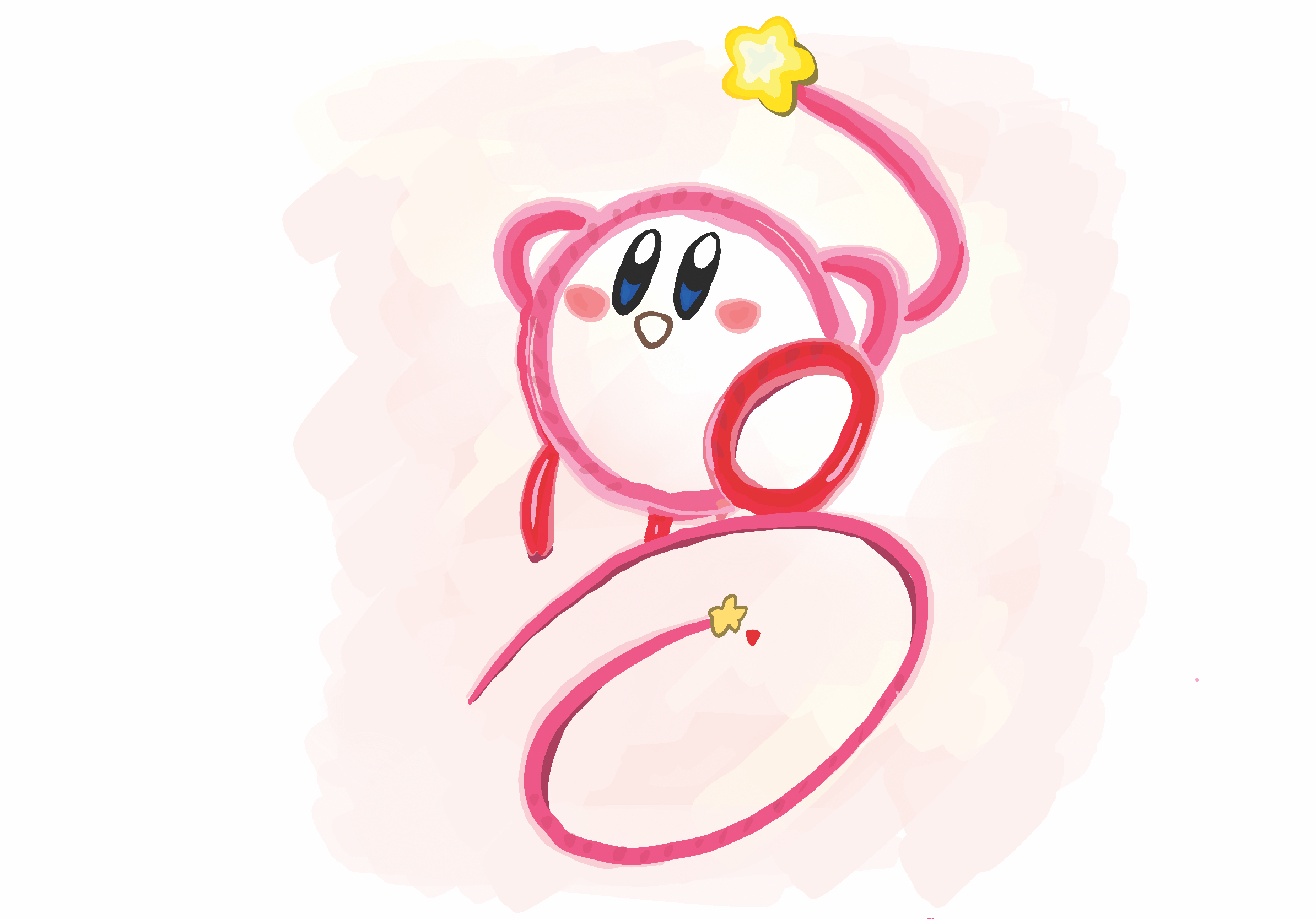Kirby’s Epic Yarn: A shared-screen storybook
January 27, 2023
 Kate Padilla
Kate PadillaOver this year’s holiday break, in a moment of serendipitous nostalgia, I stumbled upon my childhood copy of “Kirby’s Epic Yarn.” And lifting the case from its stack of stagnant clamshells, I was struck by some vaguely profound memories. I fondly remembered my sister and I on the family couch playing through the game. And I wondered, then, what “Kirby” had done so well that “Mario” hadn’t. I wondered why my sister, who had never even touched our Wii, had finished this game on her own separate save file. And I wondered why even now I remembered the tale of a pink ball of yarn defeating a magical woolen warlock.
I considered all this, as I waited for the game to load. And once it had, I began to find some answers.
First of all, Kirby’s design is androgynous. This practical move by Nintendo creates immediate appeal for kids—Kirby has no hair bow, but she is pink. Kirby has no cape, but he can wield a sword. Kirby isn’t necessarily overly tough, and Kirby isn’t necessarily overly sweet. A kid easily sees themselves in Kirby, and it’s right where they want to be. There’s no compromise of character and plenty of room to breathe.
Like all impressionable children, Kirby can also shape-shift. That’s their motif. Their superpower. They can empathize, almost to an egregious level—they copy their enemies to achieve the perfect form of imitation. And so Kirby, a walking vacuum in most games, and a pliable spool of thread in this one, acts as a hyper-specialized link for children to an all-accommodating, comfortable world. There is both limitless possibility in Kirby’s developing character, and a complete absence of rules that a new player must learn. A kid can be happy just being and can experiment with anything they happen to see.
The game’s woolen world provides comfortable variety as well—with “Plaid Square” as a space for apartment design and “Hot Land” as a home for volcanoes and dinosaurs, there’s room for both thrills and warm-fuzzies and for all the archetypes of any kid’s childhood. It’s the perfect play space for homemakers and world wasters alike in which to freely find fun.
The gameplay of “Kirby’s Epic Yarn” only serves to complement its remarkably friendly appeal. As a standard platformer with some key twists, the game provides a truly adaptable environment. It’s a stop-and-smell-the-roses kind of game, if you’d like it to be, where you mosey along in the absence of a timer and get gems thrown at you by a monkey made of felt. Or it’s a no-holds-barred chaotic kind of game, where you can speed over cyclopes in a car made out of cotton. A simple, yet striking, observation to make is that you don’t “die” in “Kirby.” Kirby can always come back in one piece, floating up from the gap you just fell in. All that’s affected is your score. And for those who don’t care about such things, it’s easy to feel that the falls are just for fun.
Complemented by all these elements, the tale of “Kirby’s Epic Yarn” is truly like that out of a storybook. Between chapters and worlds, the curtains come up and the cutscenes play, and a tale of simple, wordless, adventure drifts pleasantly by. The stakes could be high, they could be low, but none of it matters because it’s a world stitched together. There’s no bar of entry to this training ground of empathy, where the walls are made of cushions and nothing can cause harm.
Turning off the game, I was struck by a final thought. In both “Mario” and “Kirby,” players could pick each other up. But whereas in “Mario” doing so rendered the picked-up player helpless, in “Kirby,” it allowed them to jump up towards gems.

Comments
Before submitting a comment, please review our comment policy. Some key points from the policy: